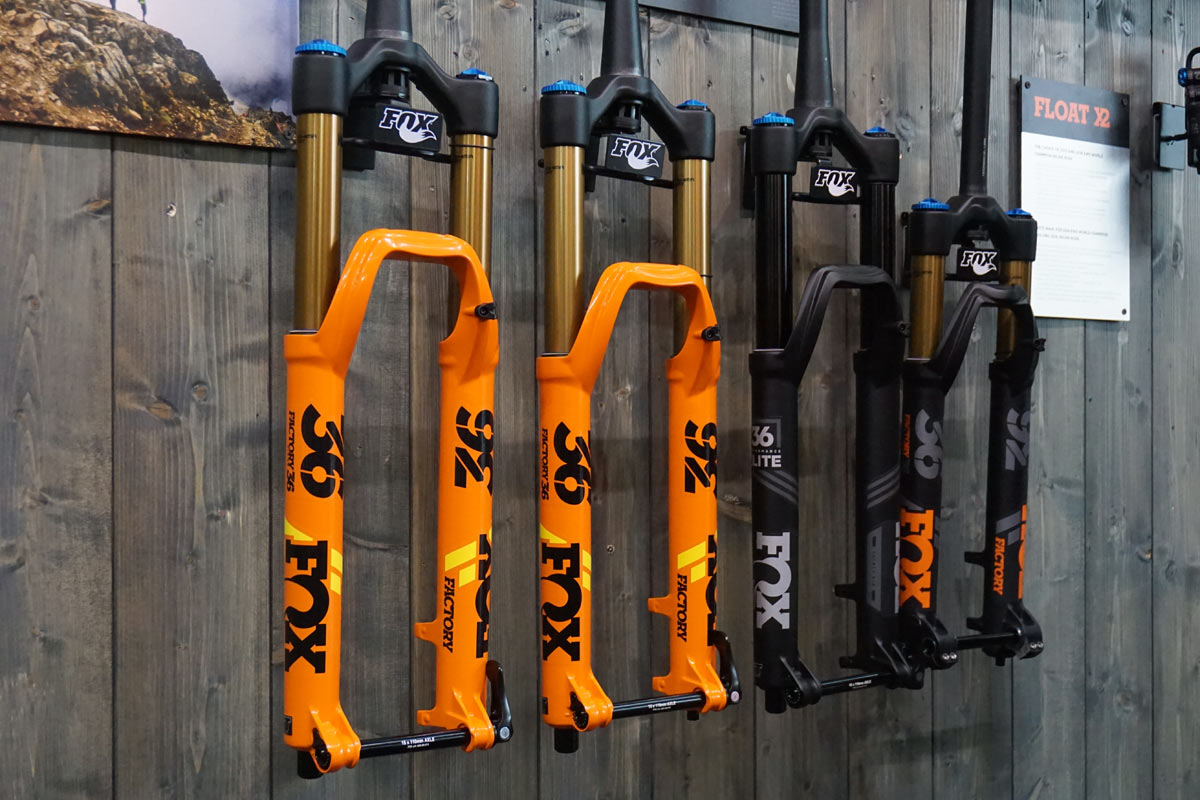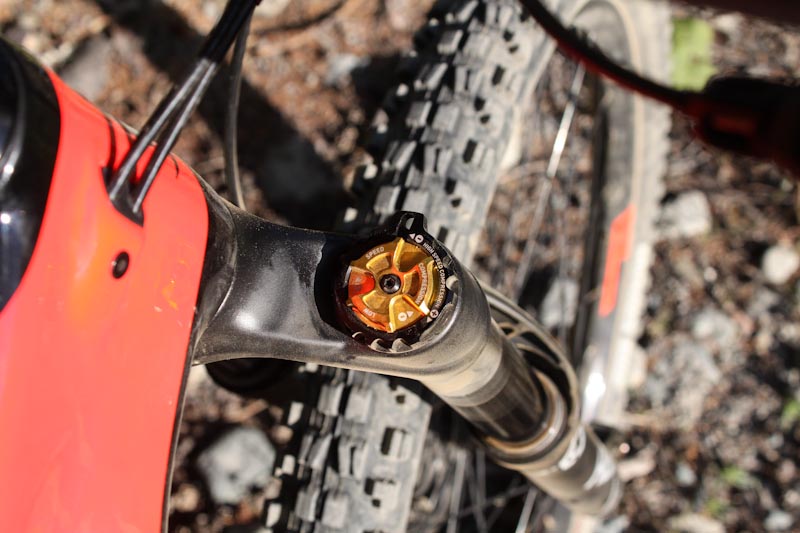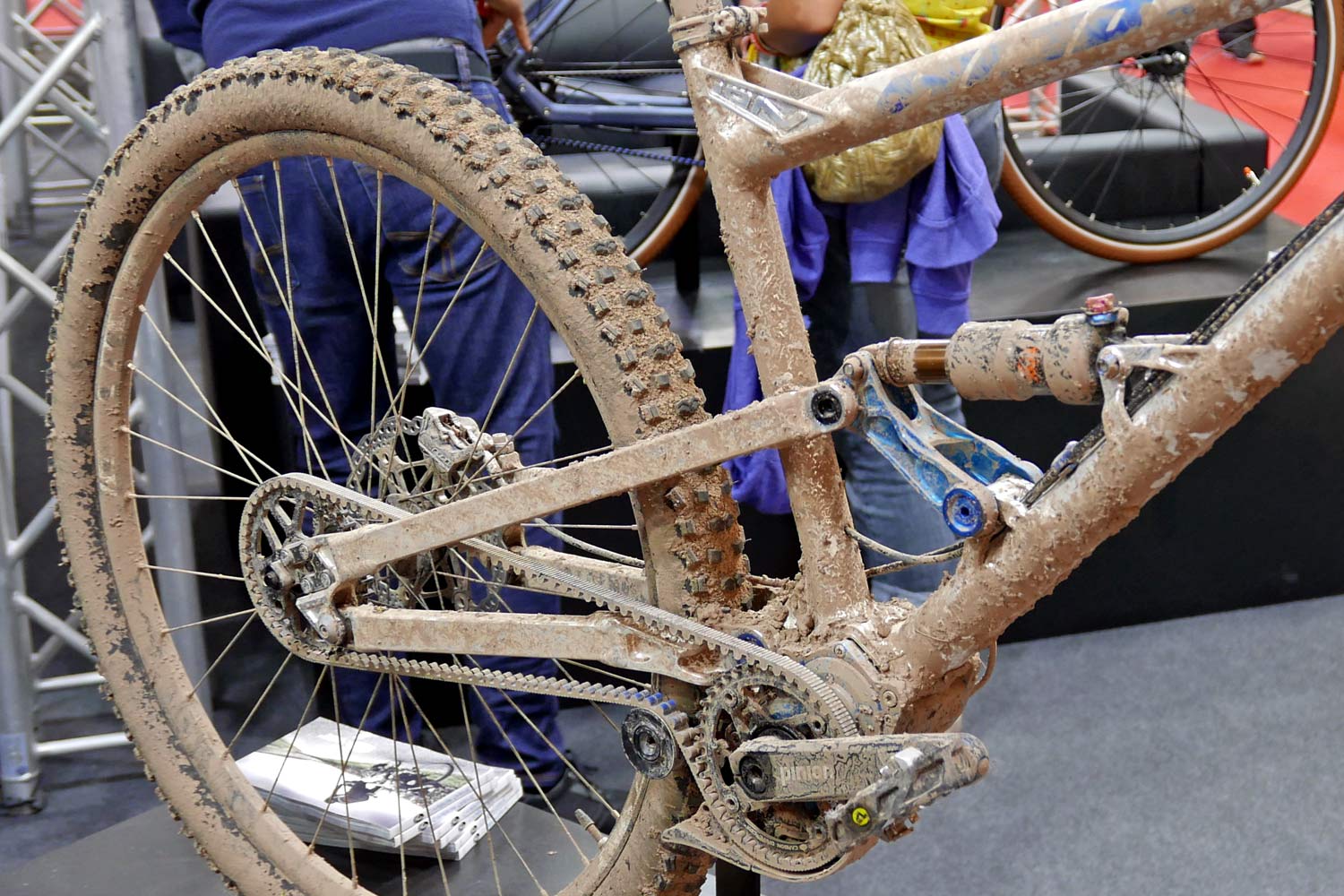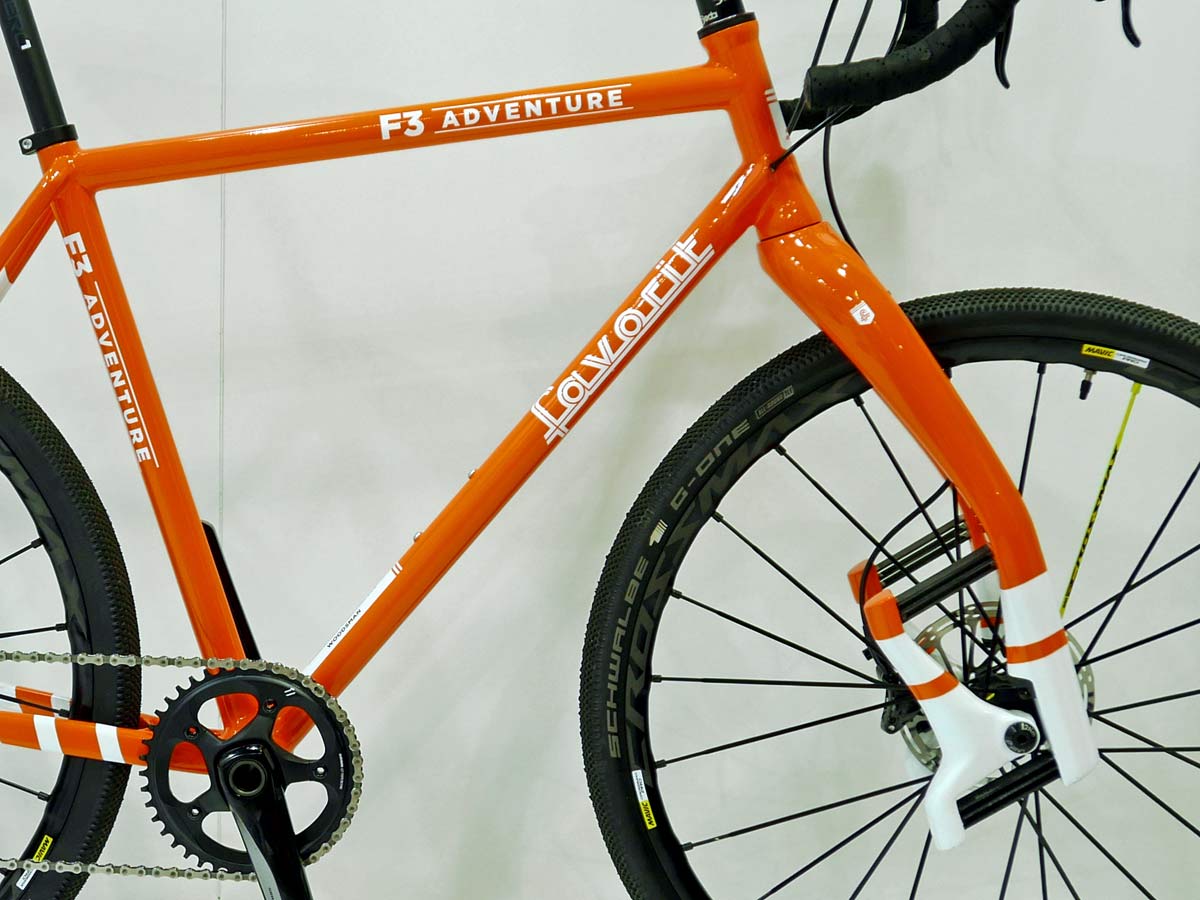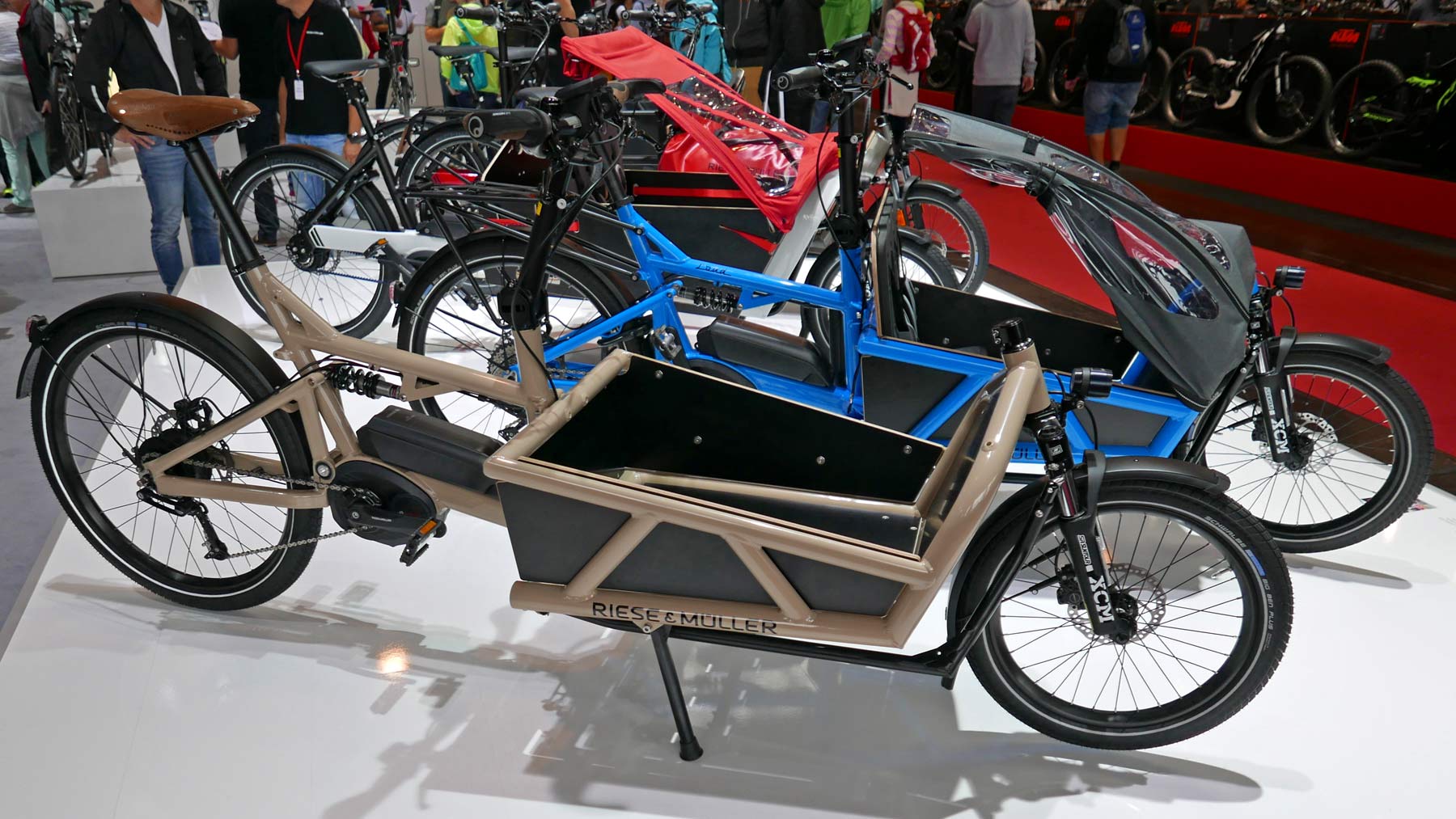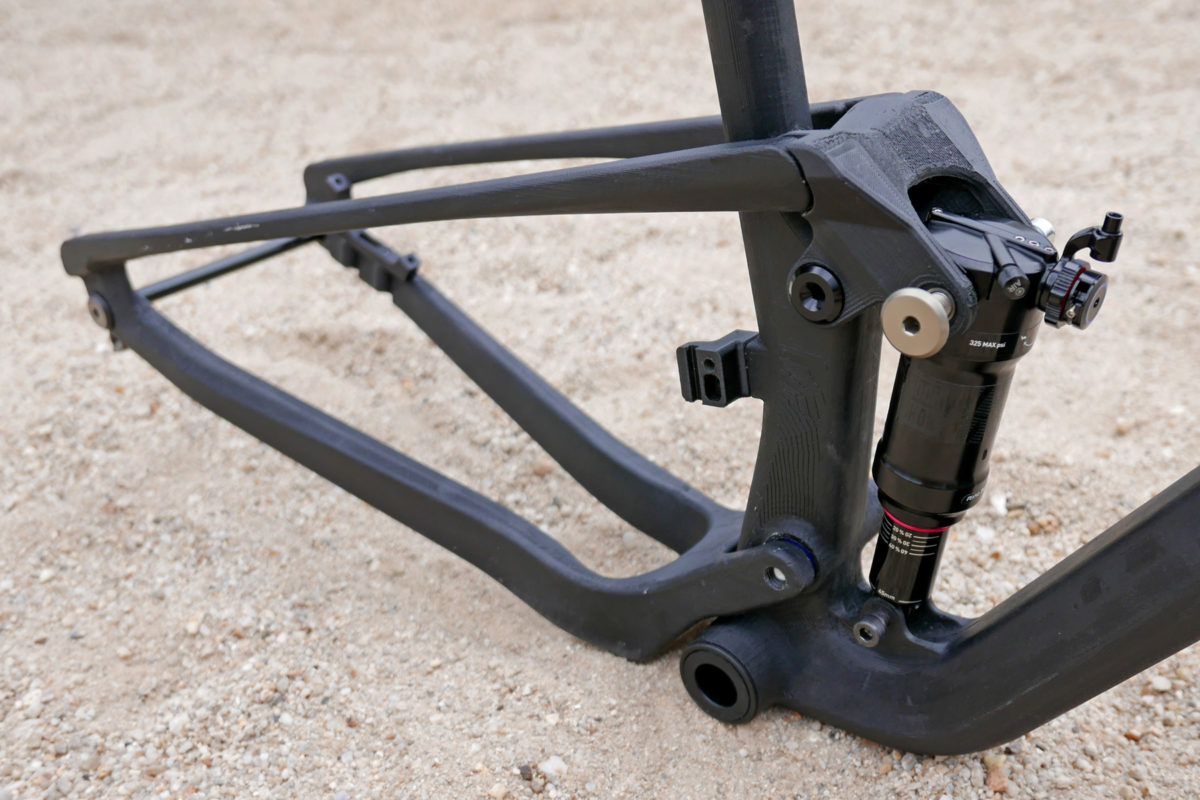Walking around the show, it’s easy to spot obvious trends. But we talked to product managers, brand ambassadors, and the marketing folks at hundreds of companies over the four days of Eurobike to get the real scoop on what’s coming for suspension in 2018 and 2019…
SHORTER OFFSET FORKS

Offset changes are coming from bikes like the new Transition Sentinel and Specialized Epic. They run longer top tubes with reduced fork offset. That keeps the wheelbase at a reasonable length, but it can increase trail and wheel flop at the extremes of cornering. Quicker handling off the top, though, but you’ve got to stay on top of it the sharper you turn. X-Fusion’s people say this means brands will have to manufacture more fork options, which can mean consumer confusion when it comes time for upgrades. And for smaller brands like them, it means more SKUs as they follow Fox and Rockshox.
29er forks typically have about 51mm offset, and 27.5 have about 46mm offset. And 26″ forks are around 42mm. Now, says X-Fusion’s rep, we’re looking at 27.5″ forks with <40mm offsets. The concern with changing it means we’re taking 20+ years of mountain bike handling refinement and throwing it out the window, sort of. So, there’ll be a learning curve as to what works best, but no brand wants to be caught off trend, so it’s likely that many more will be jumping on the long reach/short offset bandwagon.
Fox says it’s a trend that’s coming from OEM customers (aka “bike brands”), and that they’re definitely seeing more demand. They’d offered both a 44mm and 51mm offset for their 32 and 34 29er forks, but now they even offer it on the 36. Around 64° head angle is where you might run into to too much flop, but that is highly dependent on BB height, how much angles changes when sagged, and all the rest of the geometry. So you can’t just look at a head angle and offset and say a bike will or won’t work.
Our take: You can’t stop progress, and there’s no doubt bikes keep getting better, but it makes a test ride all that much more important. Especially considering a lot of brands’ bikes are really dialed for their company’s local terrain, but your conditions may be wildly different.
MORE COIL SHOCKS
Did you notice coil shocks and forks are making a come back? Both Cane Creek and MRP launched new coil versions of their forks, and PUSH recently introduced a conversion kit for Fox forks, letting you turn your 36 into a coil sprung unit.
More than a few bike product managers talked about returning to coil rear shocks for upcoming longer travel travel bikes. Properly setup with the correct spring weights, it’s hard for air shocks to match their supple and bottomless feel or to be able to offer the same performance for a comparable price tag.
ALT DRIVETRAIN SUSPENSION
Thanks to market growth for gear boxes (like Pinion) and internally geared hub updates from the likes of Shimano, Rohloff & others we’ve started spotting full suspension bikes getting the alt drivetrain treatment. We talked with some folks from Gates and they have been working with bike makers to figure out way to get the low maintenance benefits of belt drives on some suspension bikes. This prototype Nicolai takes advantage of the lower belt tension requirements of Gates’ Centertrack (with a tensioner pulley) and is a bike we look forward to getting to ride in a couple weeks at the Outdoor Demo in Bootleg Canyon.
GRAVEL & ALL-ROAD SUSPENSION
We already hit on suspension for gravel bikes yesterday, but it bears repeating. Suspension is popping up on more gravel and all-road bikes. Lauf’s leaf spring forks have been a big part of making that more visible (as was Cannondale’s Lefty-equipped Slate even earlier), but big companies like Specialized with their hidden Future Shock tech Roubaix and of course Fox with the short travel AX gravel fork seem to suggest that this trend is only growing.
CARGO BIKES!
We thought full suspension gravel bikes were crazy. That is until we saw the full suspension cargo bike. Riese & Muller’s new Load e-cargo bike (yes, we managed to sneak an e-bike into this trends post after all) debuted in the spring, but this was our first chance to see them in person. Now we kinda want to get one for a test and see how it does on our Prague cobblestones, and maybe some dirt roads! Why not, amiright?
…AND KEEP YOUR EYES OUT FOR:
Word is, Trunnion mount shocks are taking over OEM conversations. They offer a bit more room for longer stroke shocks, more damping system volume, or a slightly more compact package for tight fits, making them a versatile frame design tool without sacrificing performance.
And DVO says they’re getting requests for a compression adjust (aka lockout) remote for downhill forks. Yes, downhill. Why? So riders can make the most of out-of-the-gate sprints and flat sections between the trees. Seconds count, incremental gains, and all that…
This post works as our semi-weekly Suspension Tech series, where we explore one small suspension tech, tuning or product topic at a time. Check out past posts here. Got a question you want answered? Email us. Want your brand or product featured? We can do that, too.
